Two-thirds of Singapore’s land area is currently used as water catchment. Rain that falls in these areas is collected through an extensive network of about 8,000 kilometres of drains, canals, and rivers before it is channelled to our 17 reservoirs.
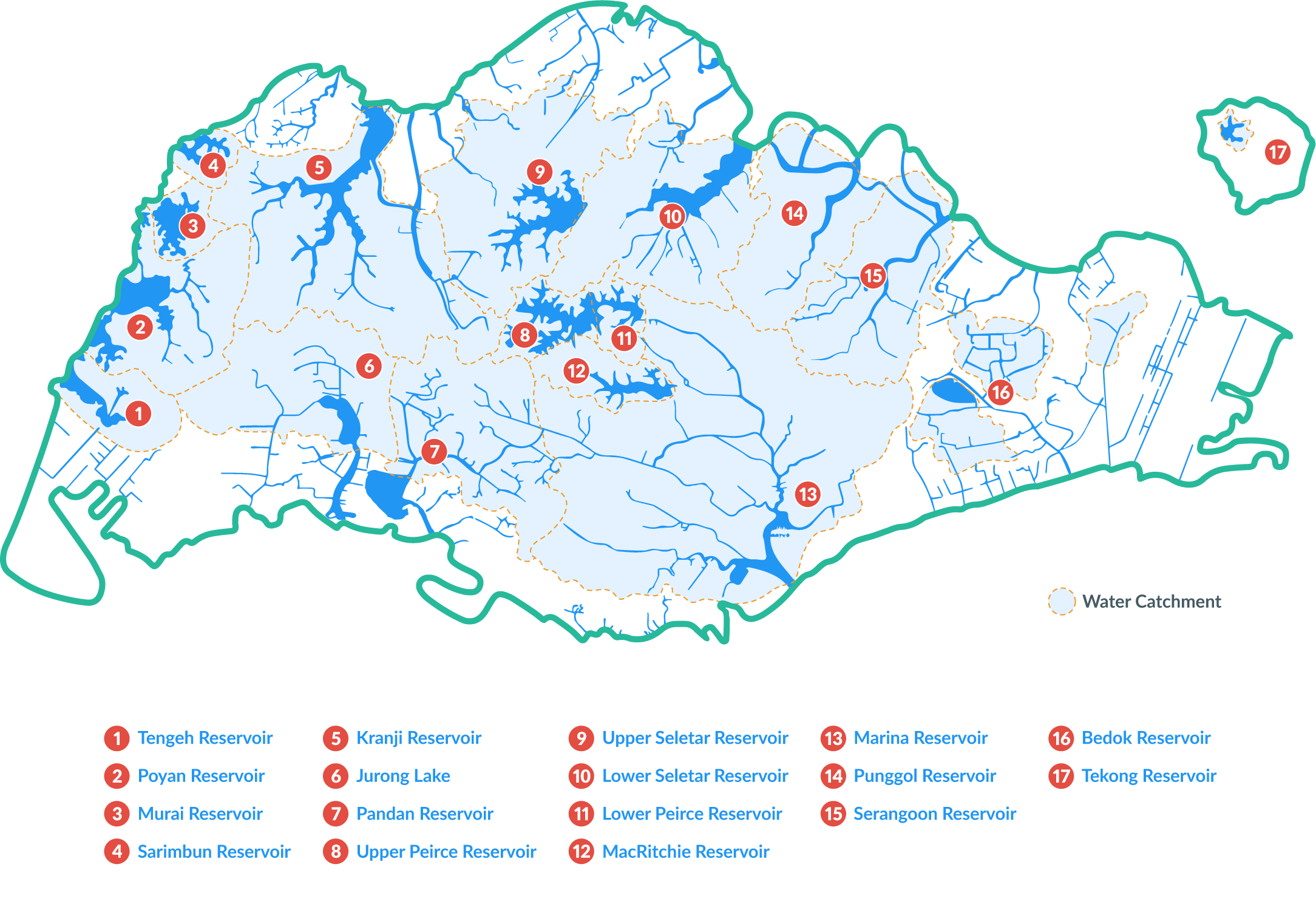
We adopt a holistic stormwater management approach, known as the ‘Source-Pathway-Receptor’ approach, to introduce flexibility and adaptability into Singapore’s drainage system. As it may not always be feasible or cost-effective to build bigger drains and infrastructure to cater to every extreme rainfall scenario due to Singapore’s land constraints, this holistic approach goes beyond drainage upgrading (i.e. ‘Pathway’ solutions) to also manage stormwater at where it falls (i.e. through ‘Source’ solutions, such as on-site detention tanks in buildings) and at the areas where floodwaters may flow to (i.e. through ‘Receptor’ solutions, such as flood barriers, and minimum crest and platform levels).
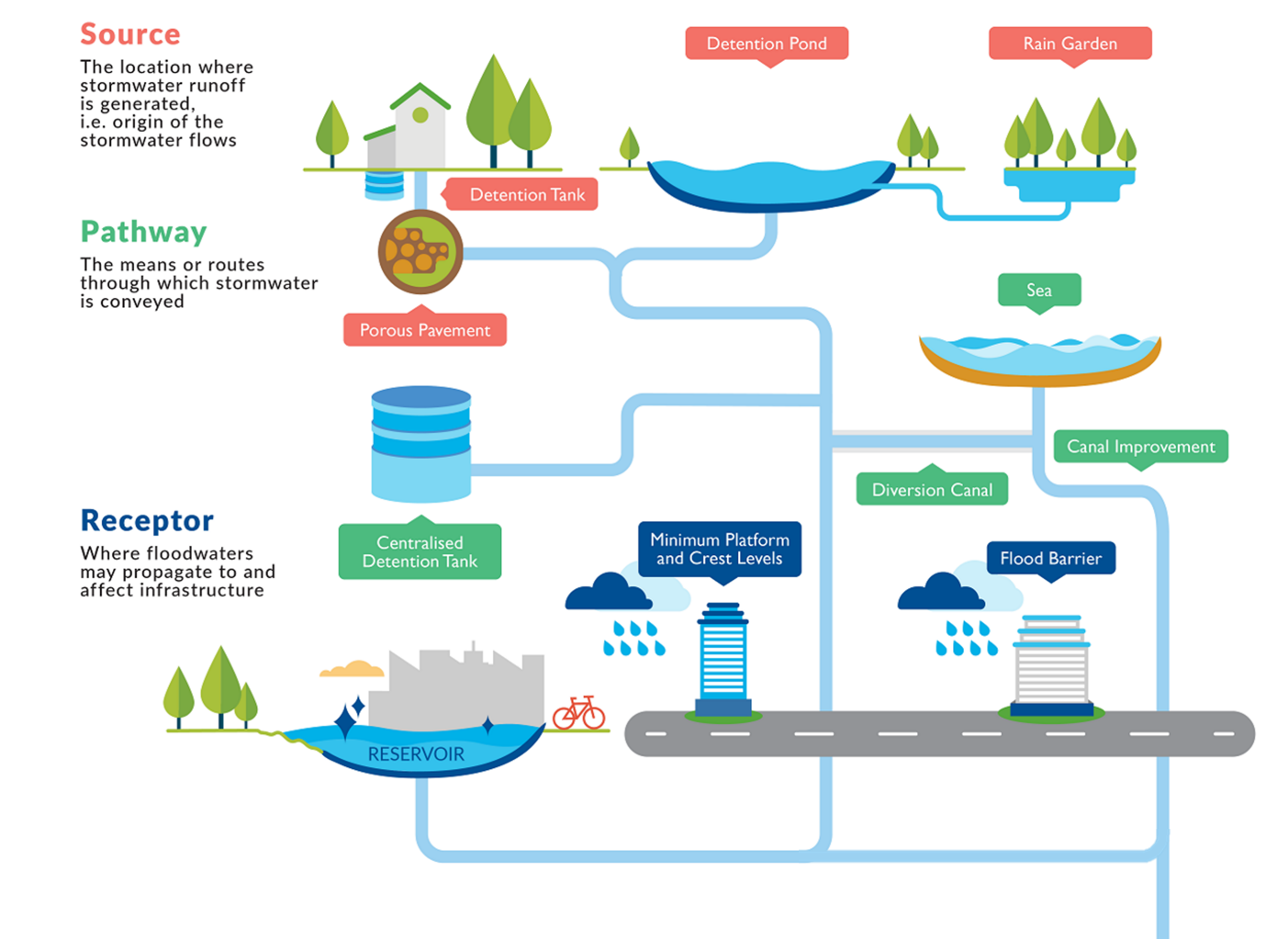
All new developments and re-developments of 0.2 hectares or more are required to implement measures to slow down surface runoff and reduce the peak flow of stormwater into the public drainage system, by implementing on-site detention measures.
‘Source’ measures, such as detention tanks or ponds, and green features like bioretention basins can regulate the rate of runoff that is discharged into the downstream drains during a rain event, or temporarily detain the stormwater and release it slowly from the development site after the rain event. This reduces the likelihood of the drainage system exceeding its design capacity during peak rainfall.
These measures complement the ‘pathway’ improvement measures (e.g. widening of drains) and improve overall flood resilience of the catchment.
Drainage improvement
We have an island-wide drainage improvement programme to continually upgrade our existing drainage infrastructure to cater for new developments, alleviate flood risks and rehabilitate aging infrastructure. These ‘pathway’ improvements include widening and deepening our drains and canals, constructing diversion canals and catchment level detention systems.
Drain maintenance
We carry out structural repairs of drains and canals where necessary, including appurtenances such as railings or drainage inlets, to ensure that they continue to function effectively. We also conduct regular hydrographic surveys to monitor the level of silt in major canals and waterways and carry out dredging where necessary, to ensure effective conveyance of stormwater.
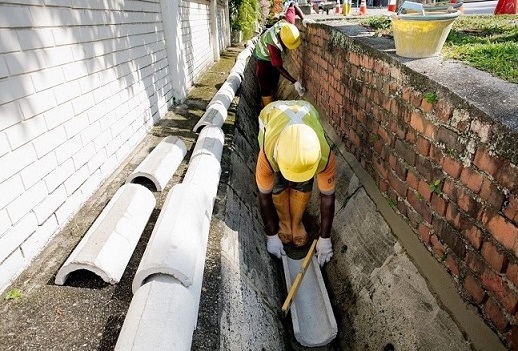
Minor repair works to improve the gradient of the drain
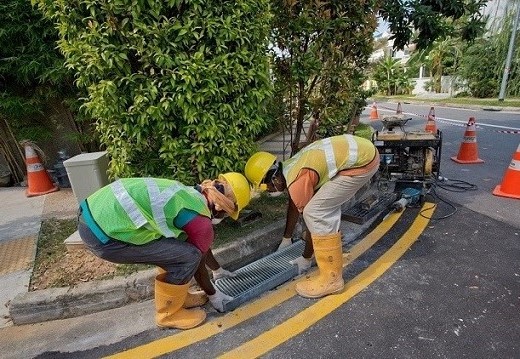
Replacement of drainage inlets (drop-inlet chamber gratings)
Drain cleansing
Regular cleansing of drains, canals and waterways is managed by the Division of Public Cleanliness (DPC), a unit set up within the National Environment Agency (NEA). DPC’s contractors are deployed island-wide to carry out physical cleansing of drains and canals in compliance with specified cleanliness standards.
We place litter collection devices such as float booms, litter traps and gratings at strategic locations of major rivers, canals and drains to ensure that they remain free-flowing and perform to their designed capacities.
During the monsoon season, we send out reminders to public agencies, Town Councils, building owners and managing agents to carry out inspections and maintenance works on their pump drainage systems, and regularly clear the drains and vertical drain gratings within their premises.
Our Quick Response Teams (QRTs) also step up checks around the island including drainage systems at critical installations and higher-flood risk locations to ensure that public drains are conveying stormwater effectively.
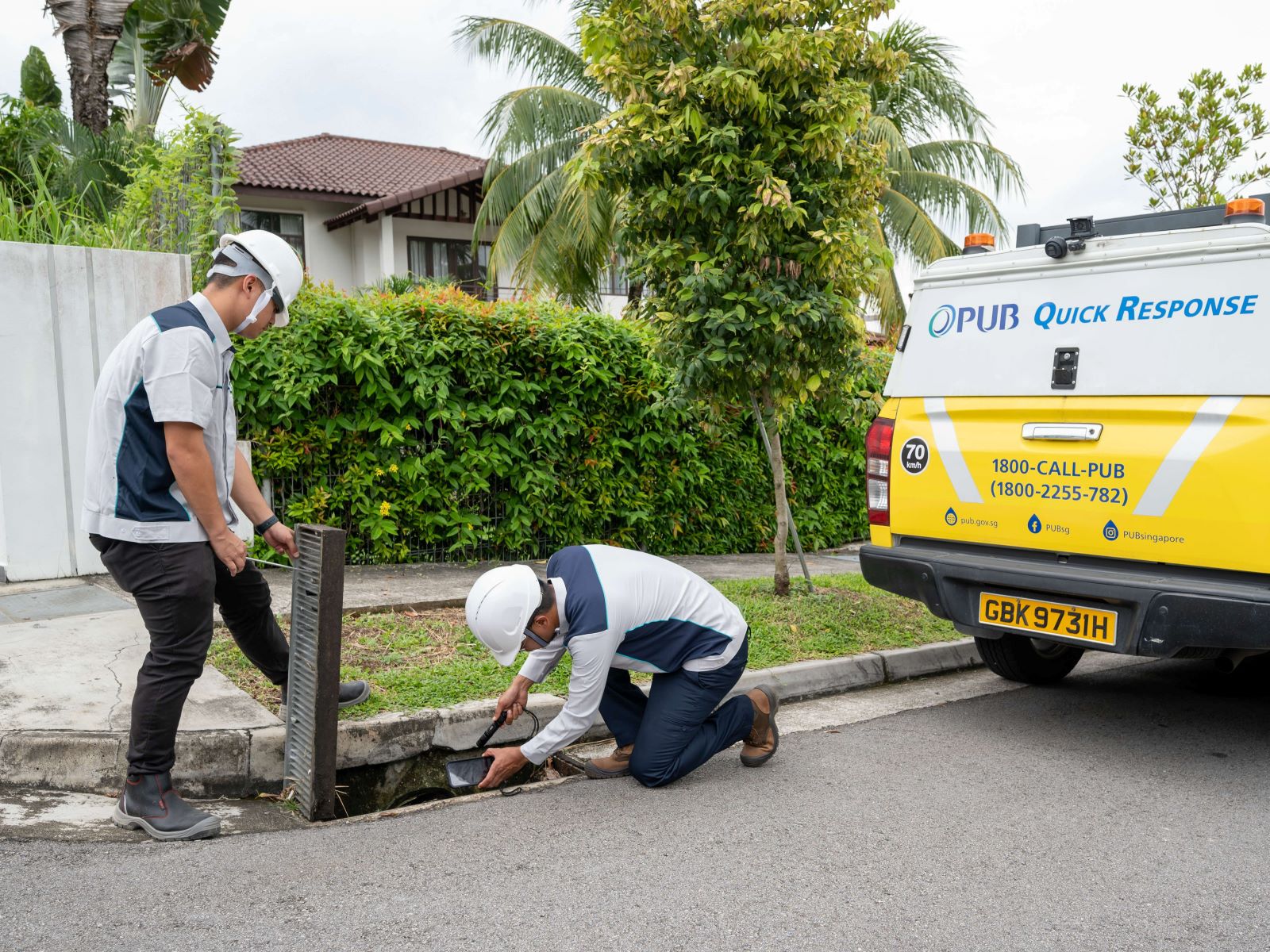
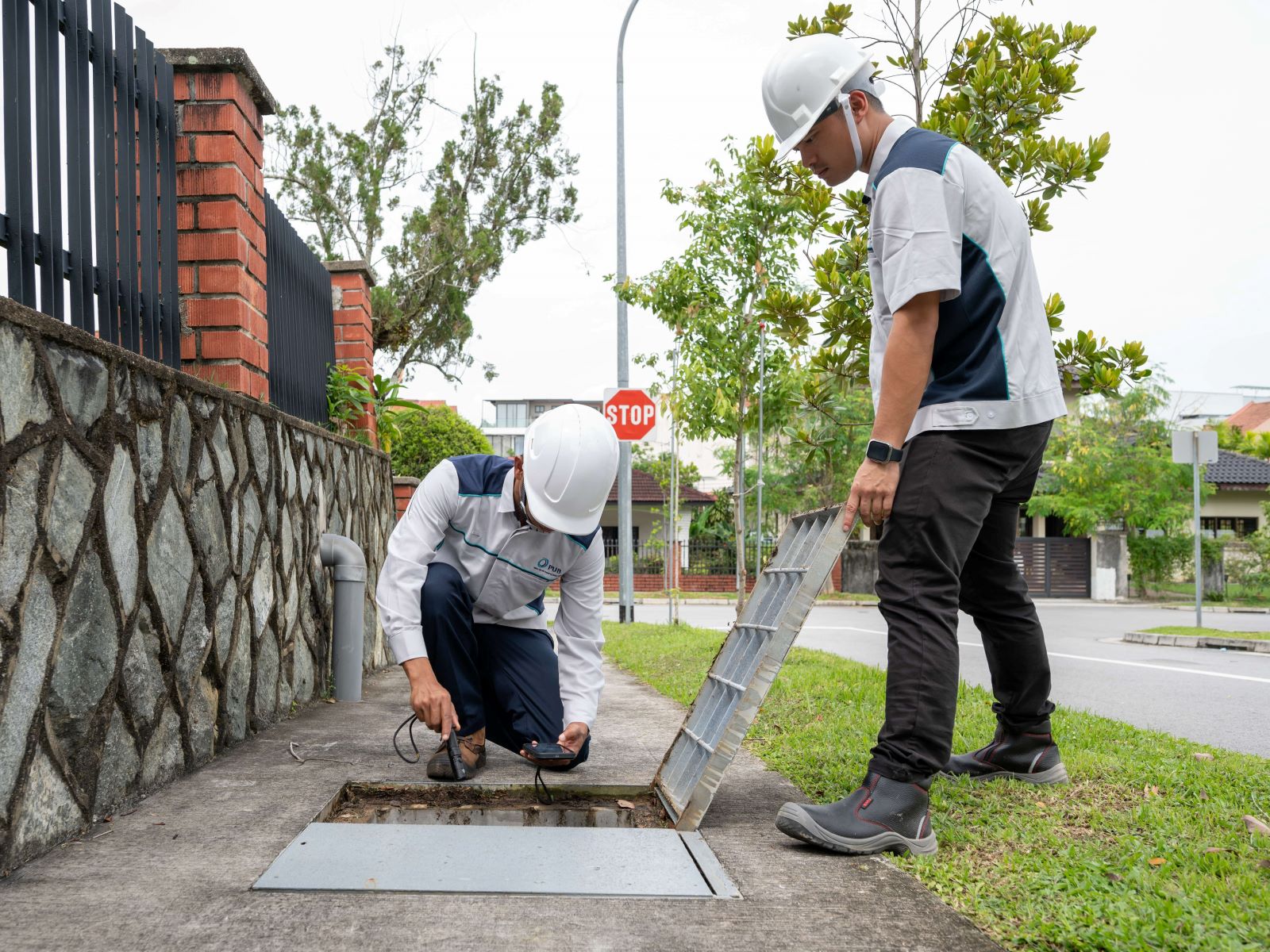
PUB’s QRT officers conducting checks at drains ahead of the monsoon season
‘Receptor’ measures are needed to provide additional flood protection for developments and infrastructure. In 2011, the minimum platform level for buildings and crest level for basements were raised from 3 metres Singapore Height Datum (SHD) to 4 metres SHD and 150 millimetres to 300 millimetres above the minimum platform level, respectively.
The crest level for underground MRT stations and road tunnel were also raised from 1 metre to 1.3 metres above the adjacent road/ground level. (This is why you typically climb a flight of stairs before descending into an underground MRT station!) This stringent crest level is also applied to developments with direct or indirect links to underground MRT stations.
All new developments and re-developments of 0.2 hectares or more are required to implement measures to slow down surface runoff and reduce the peak flow of stormwater into the public drainage system, by implementing on-site detention measures.
‘Source’ measures, such as detention tanks or ponds, and green features like bioretention basins can regulate the rate of runoff that is discharged into the downstream drains during a rain event, or temporarily detain the stormwater and release it slowly from the development site after the rain event. This reduces the likelihood of the drainage system exceeding its design capacity during peak rainfall.
These measures complement the ‘pathway’ improvement measures (e.g. widening of drains) and improve overall flood resilience of the catchment.
Drainage improvement
We have an island-wide drainage improvement programme to continually upgrade our existing drainage infrastructure to cater for new developments, alleviate flood risks and rehabilitate aging infrastructure. These ‘pathway’ improvements include widening and deepening our drains and canals, constructing diversion canals and catchment level detention systems.
Drain maintenance
We carry out structural repairs of drains and canals where necessary, including appurtenances such as railings or drainage inlets, to ensure that they continue to function effectively. We also conduct regular hydrographic surveys to monitor the level of silt in major canals and waterways and carry out dredging where necessary, to ensure effective conveyance of stormwater.

Minor repair works to improve the gradient of the drain

Replacement of drainage inlets (drop-inlet chamber gratings)
Drain cleansing
Regular cleansing of drains, canals and waterways is managed by the Division of Public Cleanliness (DPC), a unit set up within the National Environment Agency (NEA). DPC’s contractors are deployed island-wide to carry out physical cleansing of drains and canals in compliance with specified cleanliness standards.
We place litter collection devices such as float booms, litter traps and gratings at strategic locations of major rivers, canals and drains to ensure that they remain free-flowing and perform to their designed capacities.
During the monsoon season, we send out reminders to public agencies, Town Councils, building owners and managing agents to carry out inspections and maintenance works on their pump drainage systems, and regularly clear the drains and vertical drain gratings within their premises.
Our Quick Response Teams (QRTs) also step up checks around the island including drainage systems at critical installations and higher-flood risk locations to ensure that public drains are conveying stormwater effectively.


PUB’s QRT officers conducting checks at drains ahead of the monsoon season
‘Receptor’ measures are needed to provide additional flood protection for developments and infrastructure. In 2011, the minimum platform level for buildings and crest level for basements were raised from 3 metres Singapore Height Datum (SHD) to 4 metres SHD and 150 millimetres to 300 millimetres above the minimum platform level, respectively.
The crest level for underground MRT stations and road tunnel were also raised from 1 metre to 1.3 metres above the adjacent road/ground level. (This is why you typically climb a flight of stairs before descending into an underground MRT station!) This stringent crest level is also applied to developments with direct or indirect links to underground MRT stations.
Watch the video below to learn how we manage floods in Singapore!